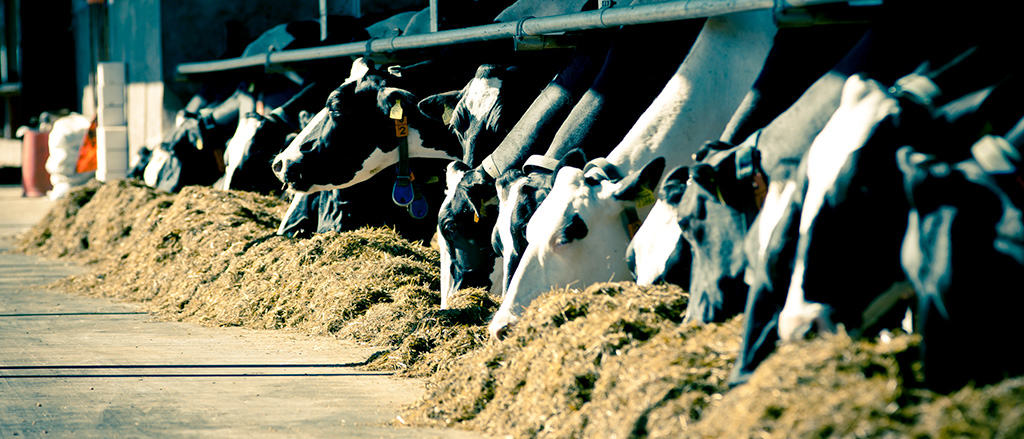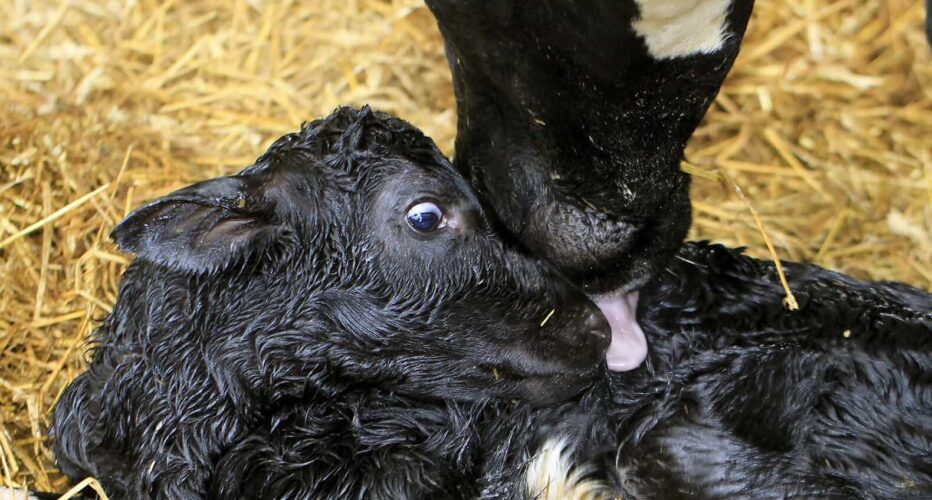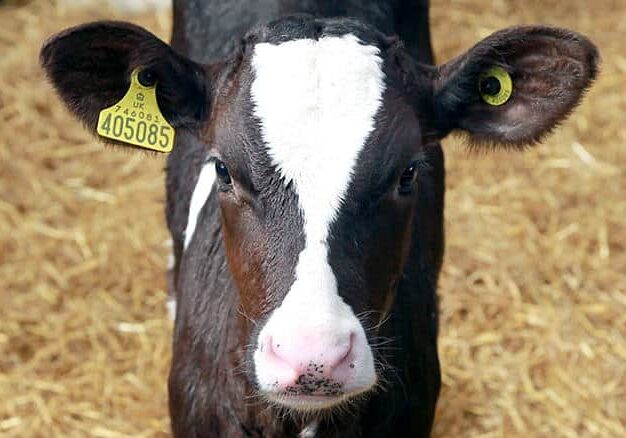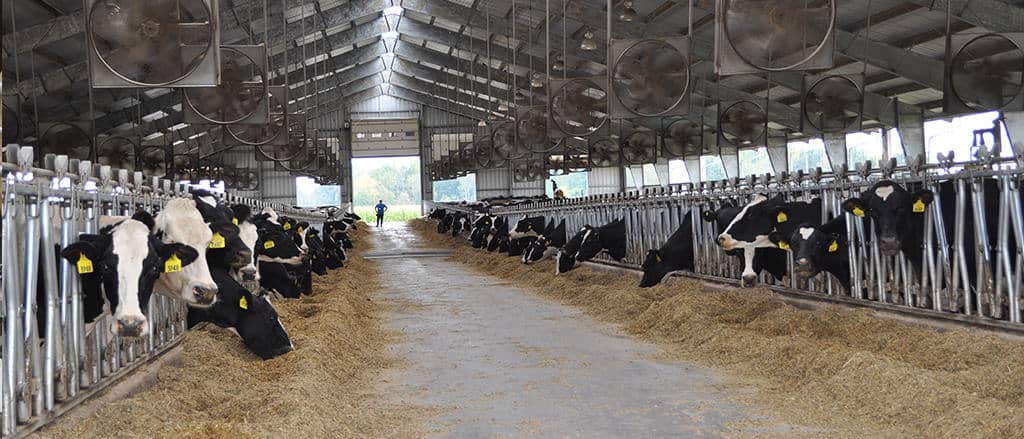The polled gene in dairy cattle is dominant over the horned gene
Polled dairy cattle trace back as far as pedigree records have been kept. The polled gene in dairy cattle is dominant over the horned gene. Yet horned cattle are still much more prevalent in the global dairy population because few producers ever chose to select for polled cattle as part of their breeding program. This is because the real, economic paybacks of selecting for production, health and conformation traits has traditionally trumped the desire for polled genetics.
Genomic selection has allowed polled enthusiasts to focus on high ranking polled animals to propagate the polled population. However, producers stressing genetic improvement in other traits are also advancing their genetics at an equally rapid rate.
You can add polled as a criteria to your genetic plan, but must keep in mind the financial repercussions of that decision in terms of the pounds of milk and components you’ll give up, and the health and fertility you may need to sacrifice, just to avoid dehorning.
The more recent public awareness about dehorning cattle has made it another hot button topic in the industry. The naturally hornless cattle have gained popularity in recent years because of consumer opinion on the dehorning process, and the side effects they feel result from it. This perception has driven producers to create more naturally polled animals than ever in the past.
The pros of polled genetics
Despite the genetic and performance sacrifices made by selecting for polled animals, many producers do see the opportunity to incorporate polled genetics into their breeding program.
- Avoid dehorning
You can save dollars, time, and labor, and also minimize stress on your calves by foregoing the need for dehorning. The average dehorning cost varies from one farm to the next based on the chosen method of dehorning, and there is a chance of causing additional stress on the calves during a crucial growth time.
However, it’s important to remember that modern dehorning methods done properly, and at an early age, will nearly eliminate stress on the calves, and will minimize your time and costs.
- Cater to consumer perceptions
It’s a fact that consumer perception directs many aspects of the dairy industry’s reality. Animal rights activists have criticized dehorning for years, but it hasn’t been until recently that the general public has joined the activists’ view on dehorning as a detrimental process. With increased awareness about this common farm chore also comes increased consumer demands on how they feel farmers should handle it on their dairies.
We clearly don’t want animals with horns running around dairies, so the question is whether to dehorn calves or breed for polled genetics. Unless consumers are willing to pay a premium for milk from naturally hornless cattle, you will likely be leaving dollars on the table by selecting exclusively for homozygous polled sires if you want to ensure no animals are born with horns.
- The polled gene is dominant
The basics of genetics tell us that since the polled gene is dominant over the horned gene, animals with one copy of the polled gene and one copy of the horned gene will not have horns, and a naturally hornless animal can be created in one generation. It also means it is easier to make more polled animals faster than if the polled gene was recessive.
An animal can have one of three combinations for the polled/horned gene:
PP = homozygous polled means this animal has no horns, an all offspring from the animal will be born without horns
Pp = heterozygous polled means this animal does not have horns, but offspring may or may not have horns depending on their mate
pp = born with horns
If you’re starting with only horned animals in your herd, the figures below demonstrate your results mating cows to a polled sire. The table on the left shows that a homozygous polled bull bred to a horned cow will result in 100% hornless offspring. The table on the right illustrates that a heterozygous polled sire bred to a horned cow will result in only 50% polled offspring.
The downside to polled genetics
Eliminating the need for dehorning may seem like the right choice for your dairy. However, the genetic sacrifices you will make in order to get to that point cannot be overlooked. Whenever you add extra selection criteria to your genetic plan, you will sacrifice in other areas. Here are just a few reasons to think twice about selecting exclusively for polled genetics in your herd.
- The continuous need for polled sires
Like mentioned above, the polled gene is dominant, so you can create a polled offspring in just one generation. What many producers tend to forget is that, at this point, maintaining a population of polled cattle in your herd is much more difficult.
As the images above show, using a heterozygous polled bull will not yield 100% polled offspring. To get to the point of a completely polled herd, and to maintain it once you’re there, you continually need to use only homozygous polled sires. This may not seem difficult, but it leads to the next shortcoming of using exclusively polled sires.
- Limited availability and variation on polled sires
Since the prevalence of polled animals within the various dairy breeds is still low, it will still take many generations to genetically eradicate horned animals from your herd if you want to maintain reasonable inbreeding levels.
Even though the number of polled bulls in active AI has increased substantially over recent years, the total number of sires providing that polled gene is still limited. AI companies will only bring in bulls at genetic levels high enough to help you make progress in your herd. And since selection for polled animals has only recently gained popularity, many of the polled bulls are closely related – either from a small group of elite polled cow families or with sires in common.
Even with selection standards in place for elite polled animals, their genetic levels don’t yet match up.
- Genetic sacrifice and compromised future performance
Most importantly, at this point in time, polled bulls, as a whole, don’t yet live up to the genetic levels of their horned counterparts. With polled as a strict selection criteria, you will miss out on the best sires, regardless if you select from the genomic or daughter-proven lists. When you figure the amount of production, health and conformation that could be lost by limiting your options to only polled sires, dehorning calves becomes even less of an issue.
Review your pros and cons for polled genetics
As you set your genetic plan keep in mind the pros and cons of selecting exclusively for polled genetics. At this point, the overall genetic and performance levels of horned animals still outpace those of polled cattle. Modern dehorning methods minimize stress on calves, so when performed correctly and at the proper time, it should be almost a non-issue.
On the flip side, you could make a case for exclusively polled sire selection if your milk plant is willing to pay more for milk from polled cattle, or if consumer perception drives your decisions.
Regardless of your selection decision, make sure it aligns with the customized genetic plan you put in place so the genetic progress you make on your farm is in the direction of your goals.





